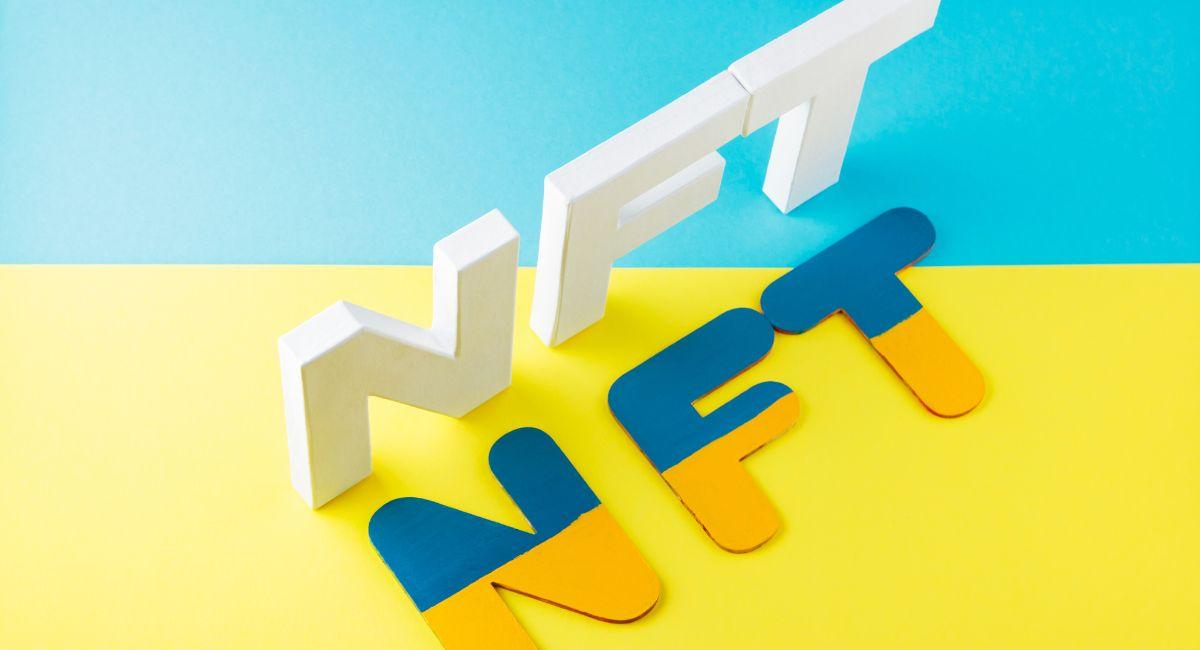Top 10 Reasons Layer 2 Blockchain Is An Ideal And Amazing Setup For NFT Developers

Layer 2 (L2) blockchain refers to a secondary framework or protocol built on top of an existing blockchain (often referred to as Layer 1). The primary purpose of solutions is to address the scalability issues inherent in many Layer 1 blockchains, which may have limitations in terms of transaction throughput and confirmation times. The solutions aim to enhance the performance and efficiency of the overall blockchain network.
Types of layer 2 solution
- Sidechains: Sidechains are separate blockchains that are interoperable with the main blockchain. They operate in parallel and can handle transactions independently before settling on the main chain. This helps alleviate congestion and reduce transaction fees on the main chain.
- State Channels: State channels are off-chain solutions where participants can engage in a series of transactions off the main blockchain. The final outcome is then recorded on the main chain. This enables fast and low-cost transactions, suitable for applications requiring frequent interactions, such as gaming or micropayments.
- Plasma: Plasma is a framework that allows the creation of scalable decentralized applications (DApps) on Ethereum and other blockchains. It involves the creation of child chains (sub-chains) that can process transactions off-chain, with the results periodically committed to the main chain.
- Rollups: Rollups are a type of Layer 2 scaling solution that processes transactions off-chain and then aggregates and submits them to the main chain. There are two main types of rollups: optimistic rollups and zk-rollups, each with its own consensus mechanism and trade-offs.
NFT (Non-Fungible Token) development involves creating and implementing the smart contracts, protocols, and infrastructure necessary for the creation, ownership, and transfer of unique digital assets on blockchain platforms.
NFT development requirements

NFT (Non-Fungible Token) development involves creating the digital assets, smart contracts, and infrastructure needed to represent unique and indivisible tokens on a blockchain. Here’s a step-by-step guide to NFT development:
-
Define the Use Case:
- Clearly define the purpose and use case for your NFT project. Determine what kind of digital or physical assets you want to tokenize and represent as NFTs.
-
Choose a Blockchain:
- Select a blockchain platform that supports NFT standards. Ethereum is a popular choice, and its ERC-721 and ERC-1155 standards are widely adopted. Other blockchains like Binance Smart Chain, Flow, and Polygon also support NFTs.
-
Set Up Development Environment:
- Set up your development environment with the necessary tools and libraries. For Ethereum, you might use tools like Remix, Truffle, or Hardhat.
-
Smart Contract Development:
- Develop the smart contracts that define the NFT standards and the rules for creating, transferring, and managing NFTs. ERC-721 is used for unique tokens, while ERC-1155 allows for both unique and fungible tokens within the same contract.
-
Metadata Storage:
- Decide where to store the metadata associated with each NFT. IPFS (InterPlanetary File System) is commonly used for decentralized and distributed storage of NFT metadata.
-
Minting and Burning:
- Implement functions in your smart contract for minting new NFTs and burning existing ones. Minting creates new tokens, while burning destroys them. These actions should be controlled by the smart contract owner or predefined rules.
-
Ownership and Transfer:
- Include functions in the smart contract to manage ownership and transfers. This ensures that NFTs can be securely and transparently transferred from one address to another.
-
Integrate with Wallets:
- Integrate your NFTs with popular wallets that support the blockchain you’re using. This ensures that users can easily manage and transfer their NFTs from their preferred wallets.
-
Build a User Interface:
- Develop a user-friendly interface, either as a standalone application or as part of an existing platform, to allow users to interact with and manage their NFTs. This is crucial for user adoption.
-
Marketplace Development:
- If you plan to have a marketplace for buying, selling, and trading NFTs, develop the necessary features and functionalities. This includes listing NFTs, bidding, and handling transactions securely.
Also, read- Top 10 Amazing Ways To Utilize UID (Unique Identifiers) In Blockchain
Developing Non-Fungible Tokens

Developing Non-Fungible Tokens (NFTs) on (L2) blockchains involves leveraging the benefits of secondary protocols to address scalability issues and improve the overall performance of NFT platforms. Here are the key steps and considerations for NFT development on Layer 2:
- Select a Layer 2 Solution:
- Choose a Layer 2 solution that aligns with your project requirements. Popular L2 solutions include Optimistic Rollups, zk-Rollups, Sidechains, State Channels, and Plasma.
- Smart Contract Deployment:
- Deploy NFT smart contracts on the chosen L2 network. Ensure that the smart contracts include the necessary functionalities for creating, transferring, and managing NFTs.
- Bridge Connection:
- If your NFTs are moving from Layer 1 to L2 or vice versa, set up a bridge or gateway to facilitate seamless token transfers between the two layers. This involves a mechanism for locking tokens on one layer and minting equivalent tokens on the other.
- User Wallet Integration:
- Ensure compatibility with popular wallets that support the chosen L2 solution. Users should be able to interact with your NFTs using their preferred wallets seamlessly.
- Gas Fees and Transaction Costs:
- Communicate the cost advantages of using Layer 2 in terms of reduced gas fees and transaction costs to attract users and creators. This is a significant selling point for Layer 2 NFT platforms.
- Scalable Infrastructure:
- Design your NFT platform’s infrastructure to take advantage of the scalability provided by Layer 2. This might involve optimizing the storage and retrieval of NFT metadata and images.
- Educate Users:
- Educate users about the Layer 2 solution you are using, how it improves the NFT experience, and any differences in the user interaction compared to Layer 1.
- Interoperability:
- Consider interoperability with other L2 solutions or even Layer 1 blockchains. This can enhance the flexibility and accessibility of your NFTs across different ecosystems.
- Security Measures:
- Implement security measures to protect against potential vulnerabilities specific to the chosen L2 solution. Ensure that user assets and NFT ownership are secure.
- Community Engagement:
- Foster community engagement and provide support for developers and users transitioning to L2. Regularly update the community on new features, improvements, and partnerships.
- Testing:
-
- Thoroughly test the NFT smart contracts and the overall functionality on the chosen Layer 2 network. Conduct audits to identify and address potential vulnerabilities. </ul
Ethereum is the second-largest blockchain network – and with that popularity can come scalability issues.
— Ledger (@Ledger) January 19, 2024
That’s where Ethereum Layer 2s come in.
Learn how Layer 2 solutions help to scale Ethereum at: https://t.co/vzu1Iqa12W pic.twitter.com/qxShV5Jofg- >
-
Top 10 reasons why Layer 2 blockchain is beneficial for NFT development:

- Scalability: Layer 2 solutions are designed to address scalability issues by offloading transactions from the main blockchain. This helps NFT platforms handle a larger number of transactions without congesting the main blockchain.
- Cost Efficiency: With reduced load on the main blockchain, transaction costs (gas fees) are generally lower on Layer 2 solutions. This makes it more cost-effective for NFT developers and users, particularly important for smaller transactions common in the NFT space.
- Faster Transactions: Layer 2 solutions enable quicker transaction confirmations by processing transactions off-chain or through sidechains. This is crucial for NFT platforms where users expect near-instantaneous confirmation for their transactions.
- Improved User Experience: Faster and cheaper transactions contribute to an improved overall user experience on NFT platforms. Users are more likely to engage with and adopt NFT applications that provide a seamless and affordable experience.
- Reduced Environmental Impact: Layer 2 solutions often have a lower environmental impact compared to some main blockchains, as they typically rely on different consensus mechanisms that are more energy-efficient. This aligns with the growing demand for sustainable blockchain practices in the NFT space.
- Interoperability: Layer 2 solutions can enhance interoperability between different blockchain networks, allowing NFTs to move seamlessly between different platforms. This can contribute to a more interconnected and versatile NFT ecosystem.
- Smart Contract Functionality: Many Layer 2 solutions support smart contracts, enabling NFT developers to create more sophisticated and programmable NFTs. This opens up possibilities for dynamic and interactive NFT experiences.
- Security: While operating off-chain, Layer 2 solutions maintain a strong connection to the security of the main blockchain. This ensures that NFT assets and transactions remain secure and tamper-resistant.
- Community Growth: By addressing scalability and cost issues, Layer 2 solutions can attract more users and developers to the NFT space. This can lead to a larger and more vibrant community, fostering innovation and creativity in NFT development.
- Customizable Solutions: Layer 2 solutions often offer flexibility and customization options for developers. NFT projects can tailor their solutions to meet specific requirements, allowing for a diverse range of NFT applications and use cases.
Conclusion
In conclusion, the adoption of Layer 2 blockchain technology stands as a pivotal choice for NFT developers, offering an array of compelling advantages that shape the landscape of NFT development. The multifaceted benefits encompass enhanced scalability, a crucial element in accommodating the growing demand for NFT transactions without compromising efficiency. Layer 2 solutions effectively alleviate congestion on the main blockchain, mitigating issues related to network congestion and high gas fees.
Moreover, the cost-effectiveness inherent in Layer 2 setups is a game-changer for developers and users alike. The reduction in transaction fees ensures that NFT projects remain financially viable and accessible, fostering a more inclusive ecosystem. This financial efficiency extends beyond transactions, as the overall development costs are significantly diminished, enabling developers to channel resources towards innovation and creativity.
Layer 2 solutions also usher in improved transaction speeds, a fundamental requirement for a seamless user experience. By processing a higher volume of transactions at a faster rate, Layer 2 blockchains eliminate bottlenecks, reducing wait times and enhancing the fluidity of NFT interactions. This heightened speed not only caters to the demands of a rapidly growing user base but also opens avenues for real-time applications and interactive NFT experiences.
The Layer 2 approach addresses environmental concerns associated with the energy-intensive consensus mechanisms of some blockchain networks. By offering eco-friendly alternatives, developers can align their projects with sustainability goals, contributing to a more responsible and ethical NFT ecosystem.
Interoperability, a key feature of Layer 2 solutions, fosters collaboration between different blockchain networks. This connectivity expands the reach of NFT projects and encourages cross-platform engagement, unlocking new possibilities for creative expression and innovation.
Security remains paramount, and Layer 2 blockchains uphold robust security measures to protect NFT assets. The integration of advanced cryptographic techniques and consensus mechanisms ensures the integrity of the blockchain, instilling confidence in users and developers alike.
The Layer 2 paradigm empowers NFT developers with a flexible and customizable environment. Smart contract functionality, a cornerstone of NFT development, is seamlessly integrated, providing developers with the tools to create dynamic and sophisticated NFT experiences.
In conclusion, the adoption of Layer 2 blockchain for NFT development is a strategic move towards a future-proof and sustainable ecosystem. By addressing scalability, cost-effectiveness, speed, environmental impact, interoperability, security, and flexibility, Layer 2 solutions emerge as the ideal setup for NFT developers, poised to shape the evolution of the NFT landscape in the years to come.




























































